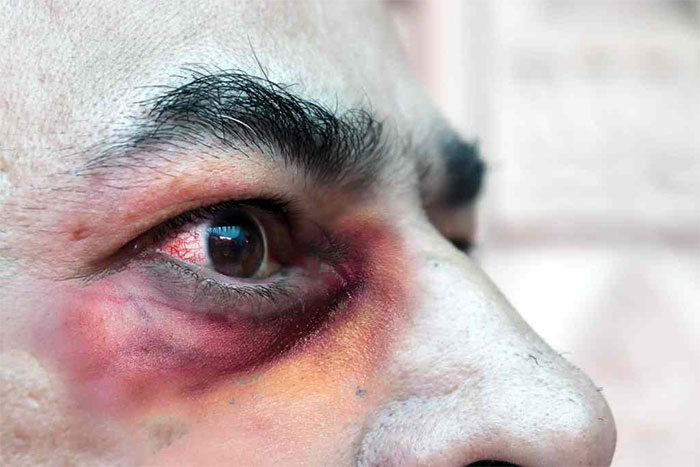Black fungus disease, also known as Mucomycosis (formerly referred to as Zygomycosis) is an invasive infection characterized by tissue infarction and necrosis, with lesions often appearing black.
Essential Information About Black Fungus Infection
Black fungus is a serious emerging infection caused by spores of a fungus known as Mucormycetes. The Mucor group produces millions of airborne spores, typically flourishing during the summer and autumn months. These spores germinate when they come into contact with moist surfaces containing decaying organic matter such as leaves, rotting wood, animal waste, or soil.
Black fungus disease (Mucomycosis) is caused by fungi from the Mucorales order, including: Rhizopus, Mucor, Apophysomyces, and Lichtheimia. These fungi normally inhabit environments such as soil, water, and air, particularly in decaying organic matter (like fruits and vegetables), and rarely cause illness in humans.
- The Rhizopus genus includes Rhizopus arrhizus, which is the most common worldwide, with Rhizopus microsporus and Rhizopus homothallicus also on the rise.
- The Mucor genus includes the common pathogenic species M. circinelloides.
- The Apophysomyces genus has four frequently encountered species: A. elegans, A. mexicanus, A. ossiformis, and A. variabilis, which have been reported as infection agents in both immunocompetent and immunocompromised patients.
- The Lichtheimia genus primarily causes disease through the species L. ramosa.
Transmission Pathways of Black Fungus Mucomycosis
The fungus enters the body through two pathways:
- Inhalation of fungal spores from the air, leading to infections in the lungs, brain, or sinuses.
- Invasion through the skin via cuts, scrapes, abrasions, burns, and other skin injuries.
No evidence of human-to-human transmission has been found.
High-Risk Groups for Black Fungus Mucomycosis
Individuals who have had COVID-19; those with type 2 diabetes, especially with diabetic ketoacidosis; cancer patients; organ transplant recipients; stem cell transplant recipients; long-term corticosteroid users; individuals with immunocompromised conditions, HIV infection; patients with skin injuries from surgery or burns; premature infants; low birth weight infants; and those suffering from malnutrition are at higher risk.

Black fungus infection can affect many organs and body parts.
Symptoms of Black Fungus Mucomycosis
According to Assoc. Prof. Dr. Do Duy Cuong, black fungus infection can impact various organs and body parts. The symptoms depend on the site of infection where the fungus develops. It can lead to necrotic blackened or discolored nasal tissue, facial pain, sinus pain radiating to the eyes, headaches, chest pain, shortness of breath, and coughing up blood… Black fungus can present in five clinical forms as follows:
- Sinus and brain infections: The high-risk group most susceptible to the fungus includes uncontrolled diabetes patients and kidney transplant recipients. Signs of this form include fever, headaches, sinus pain or nasal congestion; swelling on one side of the face; black lesions inside the mouth or on the bridge of the nose.
- Pneumonia with symptoms: Shortness of breath or rapid breathing; chest tightness; high fever above 38 degrees Celsius; coughing up blood.
- Skin and mucosal infections: Common in immunocompetent individuals with signs such as facial pain followed by the appearance of a blister on the skin, leading to skin ulcers or infections, then invading the sinuses, around the cheekbones, between the eyes and lips, eventually resulting in blackened, swollen, necrotic skin lesions.
- Gastrointestinal infections: Typically seen in children, especially premature and low birth weight infants under one month old, with signs including nausea and vomiting, abdominal pain or stomach pain, and gastrointestinal bleeding.
- Disseminated mucormycosis: This disease often occurs in patients with chronic conditions, making it difficult to distinguish its signs from existing diseases. Disseminated infections typically impact the brain and central nervous system, leading to conditions like coma or altered consciousness. Possible signs include swelling of the upper or lower eyelids (or both), pus discharge from the eyes; paralysis of the eyelid muscles, severe or prolonged progression, and systemic collapse.
Diagnosis and Treatment of Black Fungus Mucomycosis
Diagnosis of black fungus disease currently relies on clinical presentations combined with culture tests or pathological examinations, which are significant in confirming the diagnosis. However, diagnosis remains challenging due to the diverse and complex clinical symptoms, the difficulty in culturing specimens, and the need for experienced pathologists to interpret the specimens.
Assoc. Prof. Dr. Do Duy Cuong, director of the Tropical Diseases Center at Bach Mai Hospital, stated: “Currently, the Ministry of Health only has general guidelines for patients with fungal infections, and there are no specific guidelines for patients with black fungus infections. The treatment for black fungus currently employs intravenous antifungal medications such as Amphotericin B, with an attack phase lasting 2-4 weeks. However, this medication has many toxicities and is very expensive, with health insurance covering only 50%.”
Additionally, as black fungus invades deep into the sinus tissues, eye sockets, and nervous tissues, surgical intervention is necessary to remove necrotic abscess tissues and to thoroughly cleanse with antiseptic solutions. Monitoring and treating underlying conditions such as diabetes, blood disorders, adrenal insufficiency, and nutritional support are also particularly important.
“We also respectfully request that the Ministry of Health promptly establish a treatment protocol specifically for this disease, procure the necessary medications, and implement health insurance policies to cover patients with black fungus infections,” Dr. Do Duy Cuong added.
Prevention of Black Fungus Mucomycosis
Currently, there is no medication or vaccine to prevent black fungus disease. To prevent the disease, especially in patients with underlying conditions such as diabetes, cancer, immunosuppression, and post-COVID-19 recovery, Assoc. Prof. Dr. Do Duy Cuong advises:
- Avoid areas with heavy dust and construction sites. Wear a mask with a filtration efficiency of over 95% with activated carbon when in dusty areas.
- Avoid direct contact with dust or soil. Wear gloves and boots if engaging in any activities related to soil.
- Clean injured skin areas with warm water and antiseptic solutions to prevent skin infections.
- If the patient has undergone stem cell or organ transplants, consult your doctor about using antifungal medications to prevent fungal infections.
- In hospitals and healthcare facilities, ensure: Disinfect equipment used by multiple patients (endotracheal tubes, ventilators, nebulizer masks, etc.); maintain ventilation systems; and properly manage wounds…
- Effectively treat and control underlying conditions. When experiencing symptoms suspicious of black fungus infection, seek specialized facilities for examination and early antifungal treatment following the correct protocol to reduce mortality rates.
Why do COVID-19 patients in India have a high risk of aspergillosis?


















































